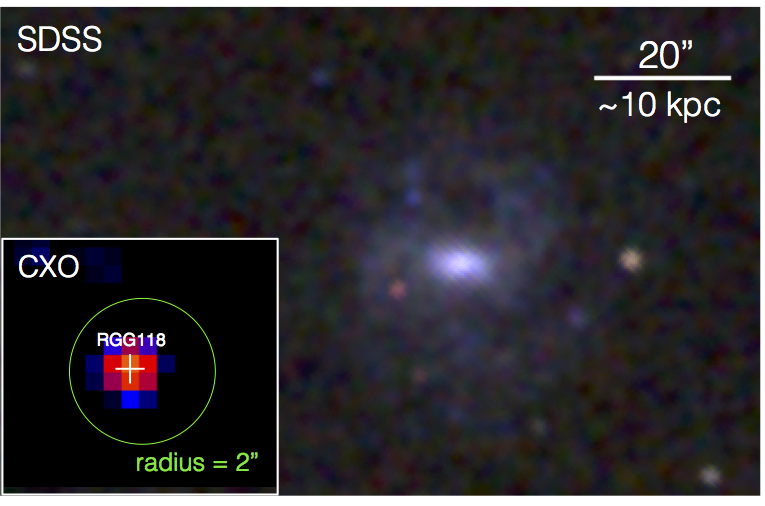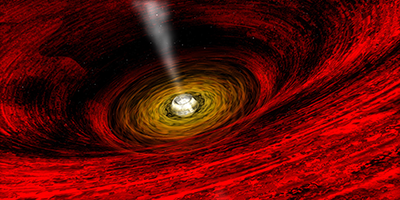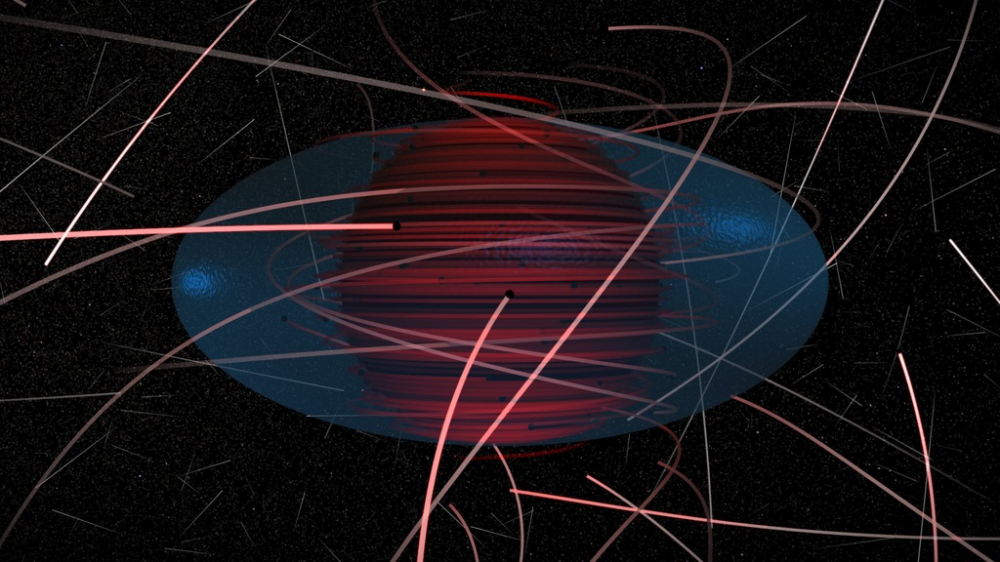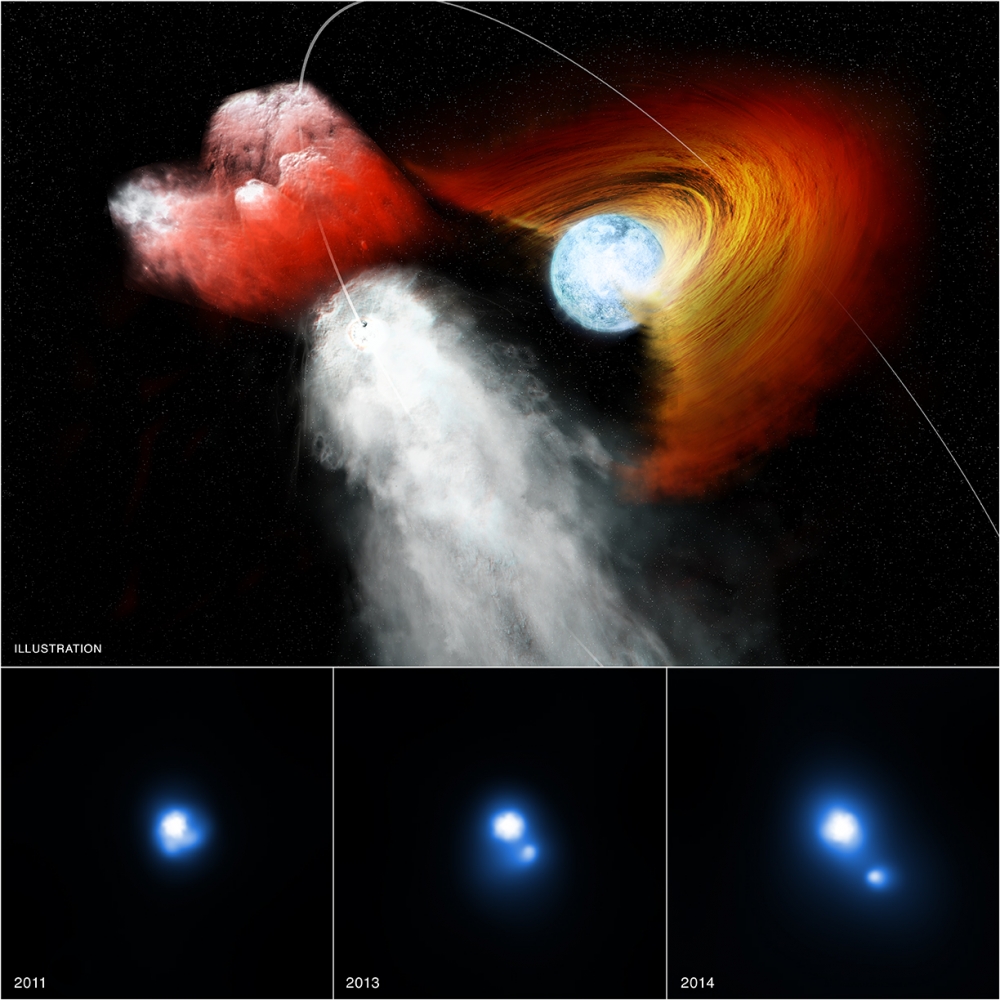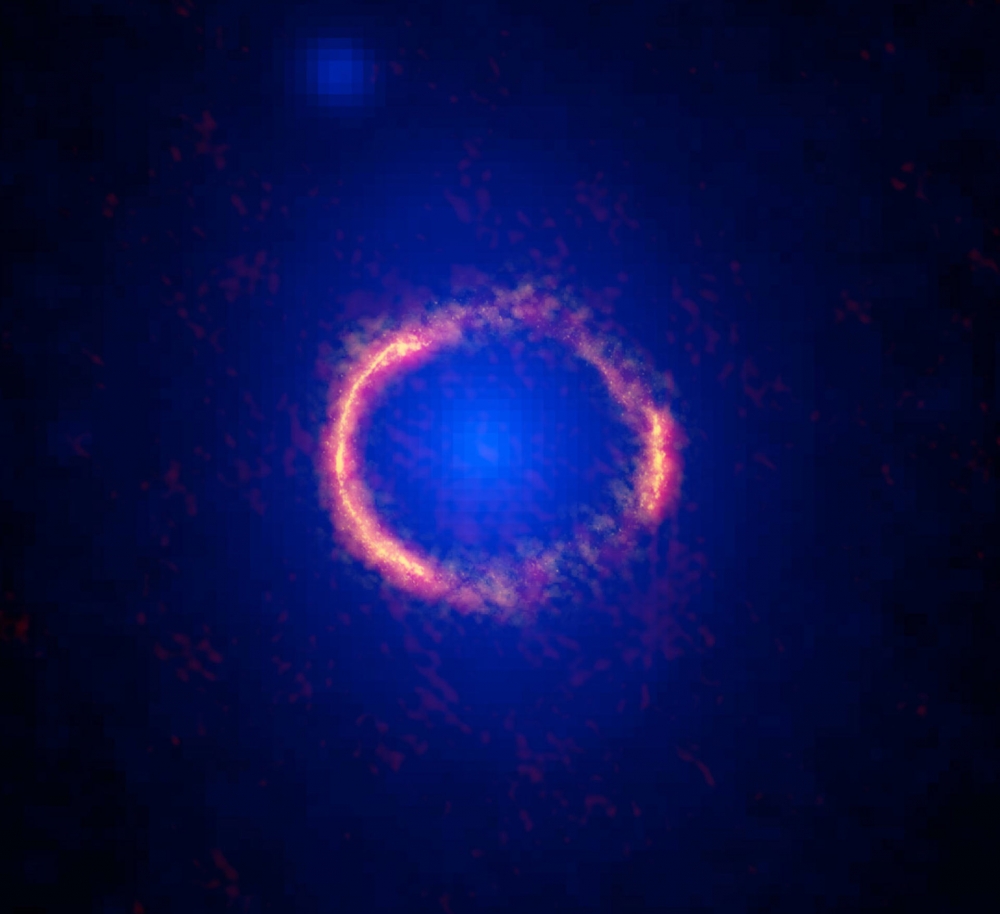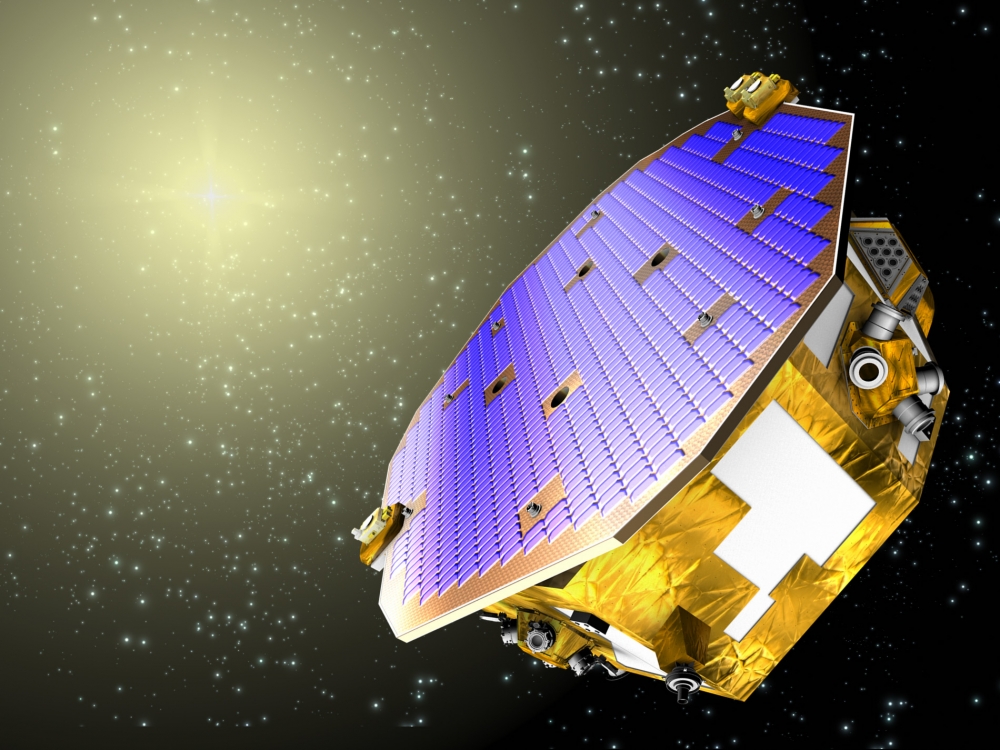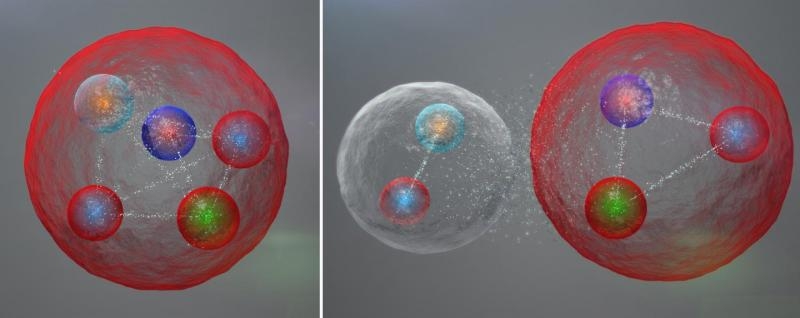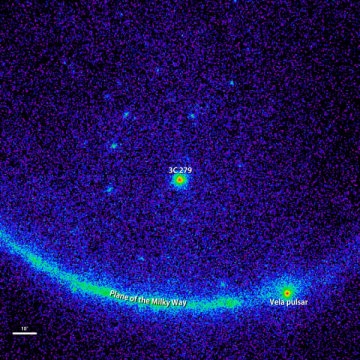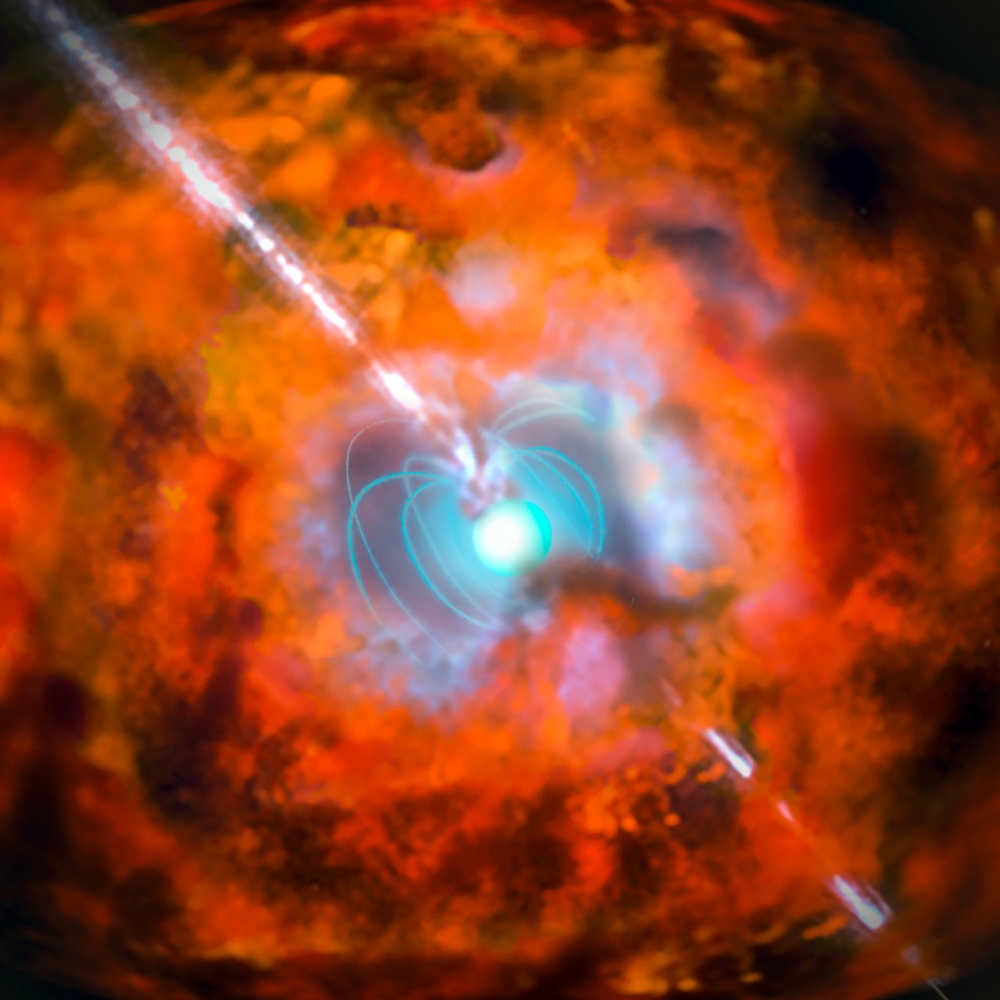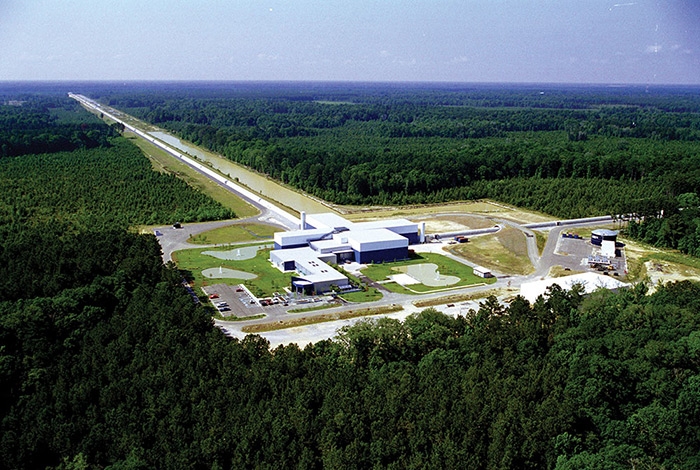Dark energy survey finds eight more galactic neighbours
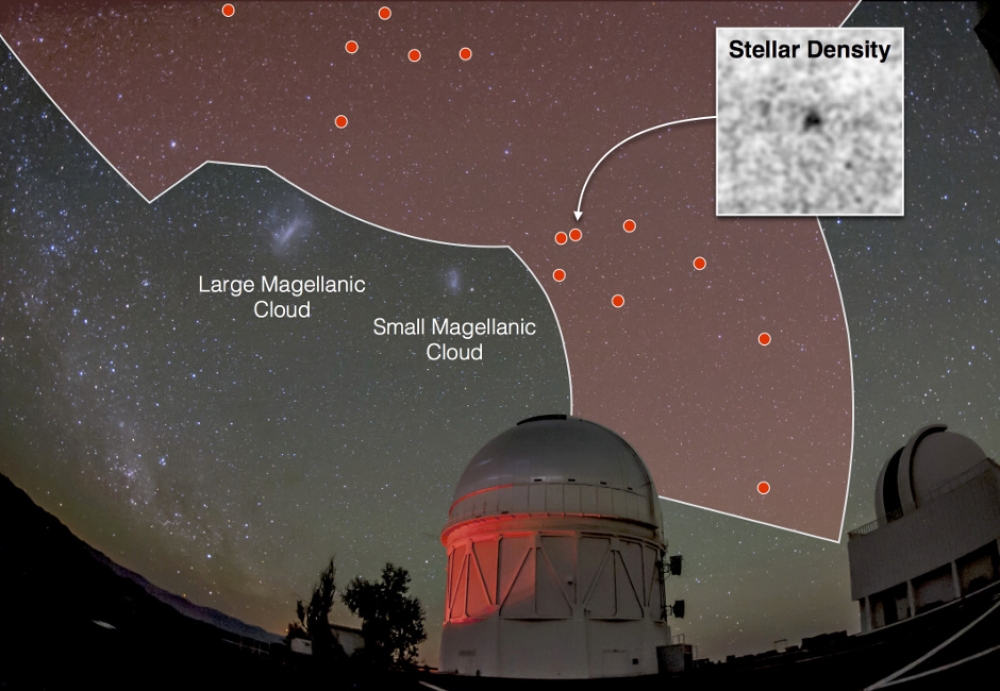
The Dark Energy Survey has now mapped one-eighth of the full sky (red shaded region) using the Dark Energy Camera on the Blanco telescope at the Cerro Tololo Inter-American Observatory in Chile (foreground). This map has led to the discovery of 17 dwarf galaxy candidates in the past six months (red dots), including eight new candidates just announced. Several of the candidates are in close proximity to the two largest dwarf galaxies orbiting the Milky Way, the Large and Small Magellanic Clouds, both of which are visible to the unaided eye. By comparison, the new stellar systems are so faint that they are difficult to “see” even in the deep DES images and can be more easily visualised using maps of the stellar density (inset). Fourteen of the dwarf galaxy candidates found in DES data are visible in this particular image. Illustration credit: Dark Energy Survey Collaboration.
See full text
